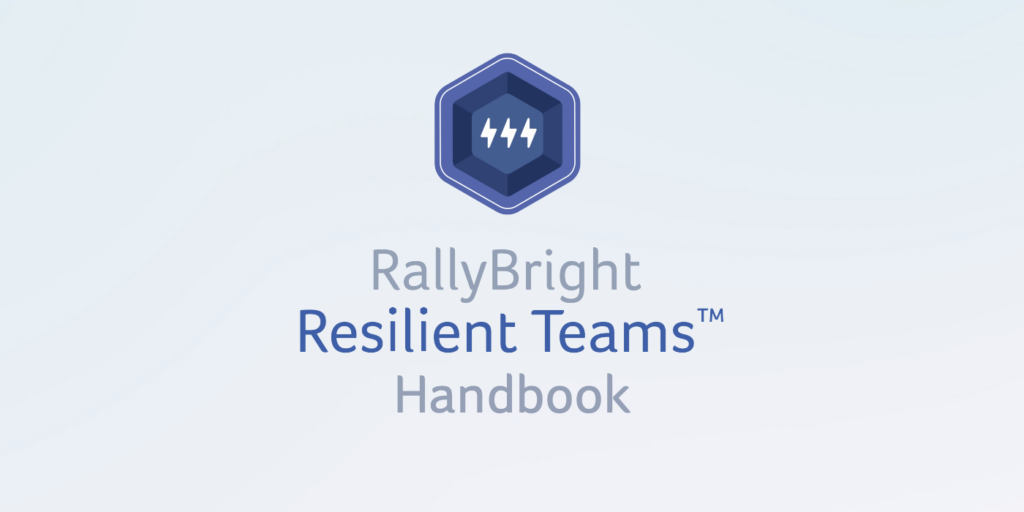In order for an organization to be high-performing, fast-growing and resilient, it must have one thing: High-performing employees. While things like an incredible product, solid infrastructure and excellent marketing all impact organizational outcomes, your employees are the ones who execute the organization’s vision and see it to fruition.
Employee performance is the bedrock for organizational performance, both on the individual and the team levels. If a team is ill-equipped to handle its responsibilities, lacks engagement or communication is difficult, then an organization is going to be hard-pressed to achieve desirable results.
But when leaders take a tactical approach to employee and team performance, learn how to play to their team’s strengths and identify where improvements can be made, they can optimize performance and drive meaningful change.
While top-tier employee performance is critical to organizational outcomes, it likely won’t happen on its own. Instead, leaders can use leading tools to improve employee performance.
Here’s everything you need to know about employee performance measurement tools and techniques (also called team performance tools) and how to successfully launch them in your organization.
The Landscape of Employee Performance Tools
Employee performance management has been a staple of the workforce for decades, becoming more common in the 1950s. These traditional performance review systems typically involve an annual review and feedback process. But in recent years, traditional performance review systems have given way to more dynamic and continuous feedback systems facilitated by software and other digital solutions, referred to as employee performance tools.

Today’s employee performance management tools encompass various functionalities, from goal setting and progress tracking to real-time feedback features. They can assess and analyze the profiles of individual employees but can also focus on team composition as a whole. A wide variety of tools are available, all of which have different strengths and offer diverse features.
Notably, today’s leading employee performance tools are also built on proven frameworks and backed by research. This contrasts traditional systems and methods, in which team performance tended to be subjective, with the outcomes being interpreted by leadership.
For example, someone administering an assessment would comb through the answers and need to derive conclusions from it. Instead, the advanced tools available today are built on known behavioral frameworks, are rooted in research and provide leaders with actionable roadmaps as next steps.
Features of Good Performance Tools
A quick Google search will show you that many high-quality employee performance tools are available for organizations today. While they all have their strengths and standout features, an organization must choose one that aligns with their needs and desired outcomes and will allow them to move the needle. Ultimately, not all employee performance tools are created equal.
Here are some of the top features of good employee performance tools to look out for:
- Rooted in data: There’s no need to guess about employee performance tools. Today’s best tools are based on proven frameworks and methodologies, giving clear, research-backed results.
- They focus on teams and individuals: Average employee performance tools often provide leaders with insights into individual performance but tend to drop the ball regarding overall team insights and understanding. Instead, look for leading tools that allow you to focus on individual and team performance. You can also focus on specific teams (such as executive teams).
- They clearly display findings: In order to use employee performance tools to drive change, findings need to be displayed and accessible. Today’s top employee performance tools provide you with charts, graphs, descriptions and scores, all of which you can use to benchmark and optimize your team’s performance.
- They highlight strengths and areas for improvement: While it’s typical for employee performance tools to uncover areas for improvement, only some can help you understand your team’s strengths. When you can benchmark team performance across the board, you can understand both opportunities for improvement and how to operationalize best practices.
- You can identify team behaviors: Team behaviors differ from strengths and skills. Leaders can leverage team behaviors into opportunities for growth by using frameworks such as DISC style and conflict style and referencing elements such as direction, psychological safety and cooperation.
The Business Case for Employee Performance Tools
Let’s get down to brass tax: Are employee performance tools worth it? As it turns out, there is a strong business for deploying employee performance tools in your organization. Here’s why.
Teams Become a Core Operating Unit
Marketing, finance and IT matter. But with employee performance tools, teams can also function as a core operating unit.
This approach helps leaders take a methodological, targeted approach to their teams and outcomes. Just as you use data, analytics and outcomes to make decisions for other core operating units, the same can be done for your team.
It Takes a Village (or Team) to Achieve Success
Having one, two or even a few all-star employees can produce desirable results. But the secret to achieving consistent, strong business outcomes across the board is ensuring your entire team is performing at the highest caliber.
At the end of the day, no individual can achieve success alone; the entire team has to work together. This can be done with the help of employee performance tools.
Team Performance Is Tied to Business Outcomes
When a team performs better, organizations can achieve better results (and more consistently). Data shows us that teams can make better decisions than individuals and improve everything from customer experience to operational performance. When teams are optimized and their performance is understood and leveraged, they can help organizations achieve their biggest goals.
Employees Feel More Included (Which Leads to a Better Workplace)
Team performance isn’t just about individual outcomes. It’s also about how your team members work together, communicate and collaborate. This inclusion can lead to positive business and organizational outcomes.
Research shows that nearly all employees in a “highly inclusive workplace report being satisfied or very satisfied with their job, vs only 65.9% of employees where inclusion is low.” Similarly, employee burnout in inclusive environments is one-third of that of organizations with low inclusion.
Executing Change and Maximizing Impact With Employee Performance Tools
How can executives effectively implement employee performance tools to execute change and maximize impact? Firstly, leaders should select a tool that aligns with their organizational goals and desired business outcomes. Whether you’re looking to drive change in certain behaviors or find ways to support better team collaboration, you can choose a tool that helps your organization achieve those goals.
Next, leaders should have a change management plan in place. Leading a team through change effectively requires leaders to understand how to boost morale, engagement and adoption and stay efficient. Taking an active and guided approach to change management can help ensure your team members smoothly transition to your new team performance tools.
Additionally, leaders should be sure to walk through any platform demos on their own and should dive into their platform’s features and elements. This can help leaders understand their new team performance tool and take advantage of its features.
Lastly, to maximize impact, leaders need to understand how to use insights from their team performance tool to foster change. For example, the RallyBright platform gives leaders a customized roadmap with clear steps to enhance team performance to seamlessly guide their team through improvements.
Measuring Effectiveness: A Tricky Art
Measuring the effectiveness of team performance tools can be tricky. Where do you start? What performance metrics reflect team performance? How can you tell what’s leading to changes?
One of the best ways to measure the effectiveness of these tools is to benchmark your team’s performance. Today’s top tools will help you first learn where your team stands on the team development pathway and will allow you to even measure them against peers in your industry. Then, as you put concrete recommendations to work, you can see where improvements are made.
Additionally, you can target certain metrics to help you measure effectiveness. Whether you want to reduce customer churn or boost employee retention, you can track metrics before you deploy a team performance tool and monitor them continuously.
Using Employee Performance Tools Can Be One of the Most Powerful Tactics Your Management Team Deploys
Think of employee performance tools as your organization’s secret weapon for success. Instead of leaning on guesswork and trial-and-error for team improvement, you can use proven tools and methods to achieve impressive change. Your organization can achieve its biggest goals and loftiest visions by optimizing your team.
If you’re ready to leverage the power of team performance tools, let’s talk. RallyBright is a platform that gives your organization the science, software and skills to build exceptional teams that crush their goals.
Let us show you how great teamwork powers great organizations. Try a demo of RallyBright today.


